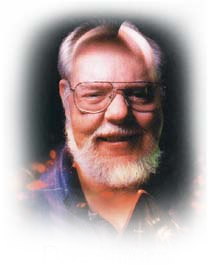
|
|
Home || House Rules || Gazetteer || Characters || Campaign Journal |
The Father of Role-PlayingHome || What's New || Dungeon Master || Players || E. Gary Gygax || Dave L. Arneson David Lance Arneson1 October 1947 – 7 April 2009 Dave Arneson, co-creator of the original Dungeons & Dragons game, passed away after waging a battle against cancer. In 1969, when Dave Arneson and Gary Gygax first met at GenCon, both were dedicated tabletop wargamers, refighting historical battles with painted miniature armies and fleets. Dave's far-ranging interests led him to a unique concept in wargaming--a wargame where each model represented just one hero instead of many soldiers in an army. The same heroes could be played in a series of games, learning and becoming more powerful with each battle; that their battles could be part of larger adventures set in the types of fantastic worlds popular in sword-&-sorcery fiction: role-playing. Dave and Gary swapped ideas and articles, notes and charts, until eventually, the manuscript took on the shape that would become Dungeons & Dragons as published in 1974. Elements of Dave's earliest campaign--the very first roleplaying campaign--were published a year later in Blackmoor. Blackmoor contained yet another innovation--the first published D&D adventure, Temple of the Frog. Whether you're a life-long gamer or a newcomer to the hobby, a grognoid paper-and-pencil gamer or a technocrat video gamer, we all owe a great debt of gratitide and thanks to Dave Arneson and his ground-breaking vision. |
|
Home || House Rules || Gazetteer || Characters || Campaign Journal |
|
DUNGEONS & DRAGONS and D&D are registered ® trademarks owned by Wizards of the Coast, Inc., a subsidiary of Hasbro, Inc. GREYHAWK, MYSTARA, HOLLOW WORLD, RED STEEL, and SAVAGE COAST are trademarks ™ owned by Wizards of the Coast, Inc. This site is a work of fan contributions and does not possess official recognition by Wizards of the Coast. The website owner and contributors make no representations to imply otherwise. The contributors retain copyright to their individual contributions with a fair-use understanding of citation in subsequent works. The artists and cartographer retain all rights to their works as typically construed for art. |